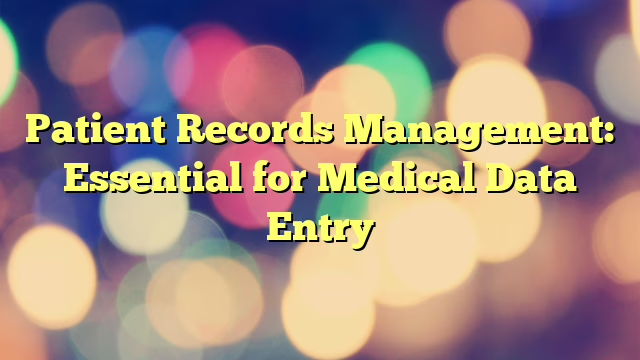Ear Canal Hygiene: Essential Tips for Healthy Ears

Last Updated on 12/11/2025 by Admin
Mastering Ear Canal Hygiene for Optimal Health
What exactly does ear canal hygiene entail?
Ear canal hygiene is the practice of keeping the ear canal clean to prevent infections and hearing loss. Many people tend to neglect this crucial aspect of their personal care routine. The ear canal’s environment is particularly prone to wax buildup, which can lead to various complications if not properly managed. By adopting regular cleaning and maintenance habits, you can effectively safeguard your ear health and promote overall ear wellness. Understanding the importance of this practice can lead to healthier ears and improved auditory experiences.
The ear canal is essential as it serves as a passageway for sound waves, directly influencing our ability to perceive sound. Therefore, maintaining cleanliness in this area is not just about aesthetics; it has a profound impact on both hearing and overall ear health. When earwax, also known as cerumen, accumulates excessively, it can lead to discomfort and serious infections if bacteria or fungi flourish. Everyday activities, such as wearing earbuds or swimming, introduce moisture and debris into the ear canal, emphasizing the necessity for consistent hygiene practices.
Why should you prioritize ear canal hygiene?
Prioritizing ear canal hygiene is vital for preventing the buildup of earwax, which can lead to a spectrum of auditory issues and infections. Regular care is not merely a recommendation; it is a fundamental aspect of overall ear health that each individual should integrate into their personal care regimen. Poor ear hygiene can result in blockages, discomfort, and chronic ear conditions that may require medical attention.
While earwax serves a protective function by trapping dust, debris, and microorganisms, excessive accumulation can lead to impacted earwax that may cause temporary hearing loss and a sensation of fullness in the ear. Additionally, neglecting ear hygiene can create an environment conducive to infections. Symptoms like itching, pain, and discharge often indicate that ear canal hygiene is being overlooked. By addressing these concerns through proper hygiene practices, you can significantly improve not only your ear health but also your overall quality of life.
How frequently should you clean your ears?
Cleaning your ears should be a regular practice, but it should not be excessive. Over-cleaning may irritate the sensitive skin lining the ear canal, leading to complications. A weekly check is generally adequate for most people, allowing the ear to engage in its natural self-cleaning process without unnecessary interference.
However, factors such as lifestyle, environment, and individual health can influence how often one should clean their ears. For instance, individuals who frequently swim or engage in activities involving water exposure may need to conduct more frequent checks. It is essential to utilize ear cleaning methods that respect the ear’s natural functions. Excessive cleaning can strip the ear of natural oils, resulting in dryness and irritation. Therefore, achieving a balance is crucial for maintaining optimal ear health.
What are the safest methods for ear cleaning?
Utilizing safe methods for cleaning your ears is imperative to avoid damaging the ear canal. Employing warm water or commercially available ear drops can be effective and gentle methods for maintaining cleanliness. It is essential to avoid cotton swabs, as these can inadvertently push wax deeper into the canal and pose a risk of injury. Instead, consider safer alternatives for ear cleaning.
Warm water can be used effectively during showers or baths. Allowing water to flow gently into the ear and then draining can help dislodge any debris. Over-the-counter ear drops designed to soften earwax are another excellent choice. These drops assist in facilitating the natural expulsion of earwax without the risk of injury associated with more invasive cleaning methods.
- Utilize warm water to rinse the ear gently.
- Choose over-the-counter ear drops to soften earwax.
- Consider ear irrigation kits designed for safe home use.
- Consult with a healthcare professional for personalized guidance.
What common mistakes should you avoid in ear canal hygiene?
Avoiding common mistakes in ear canal hygiene can significantly enhance ear health and help prevent complications. One major error is using sharp objects or applying excessive force to clean the ears, which not only risks injury but may also lead to impacted earwax. Ignoring symptoms like pain or discharge is another critical mistake; such signs often require professional attention to avoid further complications.
Inappropriately using cotton swabs is a widespread mistake that can inadvertently push wax deeper rather than effectively removing it. Furthermore, the modern misconception that ears should be entirely wax-free can lead to over-cleaning, stripping the ear of its natural defenses and causing irritation or infection. It is equally important to recognize signs of ear infections, such as persistent pain and itching, which necessitate immediate consultation with a healthcare professional.
Identifying Common Ear Canal Problems
What are the key signs of ear canal issues?
Key signs of ear canal problems often manifest as pain, itching, hearing loss, and discharge. These symptoms serve as crucial indicators that immediate attention is needed to prevent further complications. Any ongoing discomfort or unusual changes in hearing should not be ignored, as they may signify underlying issues that require professional examination and treatment.
Pain within the ear can range from mild discomfort to severe agony, often indicating an infection or blockage. Itching may suggest irritation or an allergic reaction, while hearing loss can be temporary or permanent, depending on the underlying cause. Discharge can vary in appearance and may indicate an infection requiring prompt medical attention. Early recognition of these signs allows for effective treatment, minimizing the risk of serious complications.
How does earwax buildup impact hearing?
Earwax buildup can significantly obstruct the ear canal, leading to temporary hearing loss. When wax accumulates excessively, it creates a physical barrier that impedes sound waves from reaching the eardrum effectively. This blockage can result in a muffling of sounds, akin to trying to hear while submerged underwater, which can be both disruptive and frustrating.
Moreover, excess earwax can lead to discomfort and a sensation of fullness in the ear. This feeling often drives individuals to engage in unsafe cleaning methods, exacerbating the issue. If not addressed, impacted earwax can lead to more severe complications, including infections and long-term hearing impairment. Regular monitoring and gentle cleaning of the ear canal help maintain hearing acuity and promote overall ear health.
What are the risks associated with neglecting ear canal hygiene?
Neglecting ear canal hygiene poses various risks that may lead to infections, hearing loss, and chronic ear conditions. When ear hygiene is overlooked, the ear canal becomes an ideal breeding ground for bacteria and fungi, resulting in conditions such as otitis externa, commonly known as swimmer’s ear. This infection can cause significant discomfort and may necessitate medical intervention.
Inadequate ear hygiene can also lead to impacted earwax buildup, blocking the ear canal and causing temporary hearing loss. Over time, chronic neglect can lead to more severe issues, including persistent infections that may affect the inner ear and potentially result in long-term hearing impairment. Thus, maintaining regular ear hygiene practices is crucial for preventing these complications and promoting overall ear health.
How can you effectively prevent swimmer’s ear?
Preventing swimmer’s ear involves adopting practices that reduce moisture exposure in the ear canal. Thoroughly drying the ears after swimming is essential; using a towel to gently dry the outer ear can help keep moisture at bay. Additionally, using ear drops specifically designed to help keep the ear canal dry can be beneficial. These products often contain alcohol or acetic acid, which can help evaporate excess moisture and lower the risk of infection.
It is also crucial to avoid inserting objects such as cotton swabs or fingers into the ear canal, as these can irritate the skin and introduce bacteria, increasing the likelihood of infections. Individuals who swim regularly may benefit from wearing earplugs or swim caps to minimize water exposure. By incorporating these preventive measures, you can significantly reduce the risk of developing swimmer’s ear.
What treatments are available for ear canal infections?
Treatments for ear canal infections generally include antibiotic ear drops, pain relievers, and, in some cases, oral antibiotics. Antibiotic ear drops specifically target the infection, helping to alleviate inflammation and discomfort. Pain relievers can assist in managing associated pain, enhancing recovery.
In more severe cases, an audiologist or healthcare professional may recommend oral antibiotics, particularly if the infection is widespread or accompanied by systemic symptoms. It is vital to follow a doctor’s guidance for effective treatment. Additionally, maintaining ear hygiene during recovery is essential to prevent further complications. Combining treatment with proper hygiene practices can significantly enhance recovery and promote ear health.
Insights from Experts on the Significance of Ear Canal Hygiene
Real-world success stories highlighting ear canal hygiene
Real-world examples demonstrate the benefits of proper ear canal hygiene and can serve to motivate individuals to take better care of their ears. One notable case involved an athlete who faced recurrent ear infections due to improper cleaning methods. After adopting a gentle ear-cleaning routine and seeking professional advice, the athlete reported significant improvements in ear health, allowing for continued participation in sports without discomfort.
Another success story features a musician who experienced temporary hearing loss due to earwax buildup. By integrating regular ear checks and safe cleaning practices into their routine, the musician successfully maintained optimal ear health and preserved their hearing ability.
Key benefits of maintaining ear canal hygiene include:
- Reduced risk of infections.
- Improved hearing ability.
- Enhanced comfort and decreased irritation.
- Prevention of chronic ear conditions.
These stories highlight the tangible benefits associated with maintaining ear canal hygiene, inspiring others to prioritize their ear health.
Actionable steps to maintain ear canal hygiene
Incorporating ear canal hygiene into your daily routine can be straightforward by following actionable steps. Start by scheduling a weekly check of your ears. This check should involve a visual inspection for wax buildup and any signs of discomfort. Should you notice any issues, such as itching or unusual discharge, consulting a healthcare professional is essential.
Using safe cleaning methods is also crucial. Consider using warm water during showers to gently cleanse the outer ear and apply over-the-counter ear drops as needed to soften earwax. Avoid inserting any objects into the ear canal; instead, focus on maintaining a moisture-free environment by thoroughly drying your ears after swimming or bathing.
Finally, prioritize regular check-ups with an audiologist or healthcare professional. These appointments can help identify any potential issues early on, leading to timely interventions and better ear health. Establishing these practices can significantly improve ear hygiene and overall well-being.
Expert analysis on the latest ear canal hygiene techniques
Experts are continually developing new techniques and technologies to enhance ear canal hygiene in terms of safety and effectiveness. One emerging trend is the use of ear irrigation kits, which enable individuals to safely flush out earwax at home. These kits typically include saline solutions and gentle suction mechanisms that minimize the risk of injury while effectively cleaning the ear canal.
Moreover, advancements in earwax softening solutions are noteworthy. New formulations are designed to break down earwax more effectively, simplifying the removal process. The incorporation of natural ingredients in some products has gained popularity, aligning with the growing consumer preference for organic and less chemical-laden alternatives.
Additionally, the rise of telehealth consultations has emerged as a practical solution for individuals seeking advice on ear hygiene. Virtual appointments with audiologists provide access to professional guidance without the need for in-person visits. Staying updated on these trends and techniques can help individuals maintain optimal ear hygiene and health in an evolving landscape.
Effective Techniques for Cleaning Your Ears
What tools are considered safe for ear cleaning?
Safe tools for ear cleaning include over-the-counter ear drops, cotton swabs (when used with caution), and irrigation kits designed for home use. These tools can assist in the removal of earwax without causing damage to the ear canal. Understanding their proper use is crucial for maintaining ear health while minimizing risks.
Ear drops formulated to soften earwax are particularly effective. They help break down wax buildup, making it easier for the body to flush it out naturally. When using cotton swabs, caution is key; they should only be used on the outer ear to avoid pushing wax deeper into the canal. For those who prefer a more thorough cleaning, ear irrigation kits can provide an excellent alternative, allowing for gentle flushing of the ear canal without invasive measures.
Maintaining a clean environment while using these tools is also important for safety. Ensure that any tools are sanitized and free from bacteria before use, following instructions carefully to avoid complications. By incorporating these safe tools into a cleaning routine, individuals can effectively manage their ear hygiene.
How can you effectively use ear drops?
Using ear drops effectively involves adhering to specific instructions to maximize their benefits while minimizing potential irritation. Start by selecting a product specifically designed for earwax removal. Typically, these drops should be slightly warmed to body temperature for optimal comfort.
To apply, tilt your head to the side and place the recommended number of drops into the ear canal. Allow the drops to sit for a few minutes to ensure they reach the earwax. This waiting period provides the drops time to soften the wax, making it easier to remove. Afterward, gently tilt your head to the opposite side to let the drops and any dislodged wax exit the ear.
Avoid overusing ear drops, as excessive amounts can lead to irritation. If symptoms persist or worsen, it is advisable to consult a healthcare provider for further guidance. By integrating this method into a regular ear hygiene routine, individuals can effectively manage earwax buildup.
What are the steps involved in ear irrigation?
Ear irrigation is a safe and effective method for removing excess earwax when performed correctly. Before beginning, it is essential to have an ear irrigation kit, which typically includes a syringe and a saline solution.
Start by preparing the saline solution according to the kit’s instructions. Next, tilt your head over a sink or bowl to catch any excess fluid. Using the syringe, gently introduce the saline solution into the ear canal, taking care not to force it. The solution should flow into the ear and help dislodge the earwax.
After a few moments, tilt your head in the opposite direction to allow the solution and any dislodged wax to drain out. You may need to repeat this process until the ear feels clear. Always follow the manufacturer’s instructions, and consult with a healthcare professional if you experience pain or discomfort during the process. Proper ear irrigation can significantly enhance ear hygiene and promote overall ear health.
When to Consult a Professional
What symptoms signal the need for immediate medical attention?
Certain symptoms necessitate immediate medical attention, including severe pain, sudden hearing loss, and discharge from the ear. These symptoms can indicate serious ear conditions that require professional evaluation and treatment. Ignoring these signs may lead to worsening conditions and potential long-term damage.
Severe pain may suggest an infection or injury that could worsen if left untreated. Sudden hearing loss is a concerning symptom that may indicate a more significant issue affecting the auditory system. Discharge, especially if accompanied by a foul smell, could indicate infection and should not be dismissed. In such circumstances, timely medical intervention can help prevent complications, ensuring that any underlying issues are addressed promptly.
How can an audiologist assist with ear canal issues?
Audiologists play a pivotal role in diagnosing and treating ear canal issues. Their specialized training equips them to comprehensively evaluate auditory systems. An audiologist can provide professional cleaning to safely remove impacted earwax, significantly reducing the risks associated with self-cleaning methods.
Beyond cleaning, audiologists can offer personalized advice on maintaining ear health, tailored to individual lifestyles and environments. They may also conduct hearing tests to assess any potential hearing loss due to ear canal issues, providing invaluable insights to guide treatment options. By consulting an audiologist, individuals ensure that their ear health is closely monitored and effectively managed.
When should you consider visiting an ear specialist?
Visiting an ear specialist becomes necessary when home remedies fail to alleviate symptoms or if persistent issues arise. Should symptoms like pain, discharge, or hearing loss continue despite proper hygiene, seeking specialized care is vital. Ear specialists, such as otolaryngologists, offer advanced diagnostic tools and treatments that surpass standard care.
These specialists have the expertise to manage complex ear conditions that may not respond to conventional methods. They can perform procedures like microsuction or manual wax removal, providing effective solutions for impacted earwax. If you suspect a more severe condition or have a history of recurring ear issues, consulting an ear specialist is crucial for timely intervention and improved overall ear health.
Preventive Strategies for Ear Canal Health
What daily habits promote optimal ear canal health?
Daily habits can significantly influence ear canal health. It’s essential to avoid using cotton swabs deep within the ear, as these can push wax further into the canal and lead to blockages. Maintaining dryness in the ears, particularly after swimming or bathing, is crucial for preventing infections.
Incorporating regular checks into your routine can help monitor ear health. A simple visual inspection can identify any wax buildup or signs of infection. Moreover, using ear protection in noisy environments can prevent hearing damage and promote long-term ear health.
- Avoid inserting objects into the ear canal.
- Keep ears dry after exposure to water.
- Schedule regular ear health checks.
- Utilize ear protection in loud environments.
These daily practices contribute to maintaining ear hygiene and preventing potential issues.
How does diet influence ear canal health?
A balanced diet rich in vitamins and minerals can significantly support overall ear health. Specific nutrients play vital roles in maintaining the integrity of ear structures and warding off infections. For example, omega-3 fatty acids, commonly found in fish and flaxseed, can help reduce inflammation, benefiting ear health.
Vitamins A and C are essential for keeping mucous membranes, including those in the ear canal, healthy. Foods high in antioxidants, such as fruits and vegetables, bolster the immune system, helping to fend off infections that can compromise ear health.
Additionally, encouraging hydration is vital; staying well-hydrated ensures that mucous membranes function optimally, keeping the ear canal moist and preventing excessive wax buildup. By adopting a nutrient-rich diet, individuals can proactively enhance their ear canal health.
What environmental factors affect ear canal hygiene?
Environmental factors significantly influence ear canal hygiene, with humidity and exposure to water being two primary considerations. High humidity levels can promote moisture accumulation in the ear canal, creating an ideal setting for bacterial growth, potentially leading to infections and discomfort.
Exposure to water, especially chlorinated pool water, can also affect ear hygiene. Water entering the ear canal can mix with earwax, leading to excessive buildup and potential blockages. It’s advisable to use earplugs or swim caps during swimming to protect the ears from prolonged moisture exposure.
Understanding these environmental factors allows individuals to take preventive measures. By being aware of how humidity and water exposure can impact ear health, one can adopt practices that promote a cleaner, healthier ear canal.
How can regular check-ups enhance ear canal health?
Regular check-ups with healthcare professionals can significantly benefit ear canal health by allowing for early detection and management of issues. During these appointments, audiologists and other professionals can conduct thorough evaluations of ear health, identifying problems that may not be apparent to the individual.
These check-ups can help address any wax accumulation before it becomes problematic, reducing the risk of infections and hearing loss. Additionally, professionals can offer tailored advice on maintaining ear hygiene based on individual lifestyles and needs.
Establishing a routine for regular check-ups fosters a proactive approach to ear health, ensuring that potential concerns are addressed promptly. By prioritizing these visits, individuals can maintain optimal ear hygiene and overall well-being.
What role do ear protection devices play in ear canal health?
Ear protection devices, such as earplugs and earmuffs, are crucial in safeguarding ear canal health. These devices shield the ear from loud noises, significantly reducing the risk of noise-induced hearing loss. Chronic exposure to loud environments can harm the delicate structures within the ear, leading to permanent impairment.
In addition to noise protection, ear protection devices can help prevent the entry of water and debris into the ear canal, thereby reducing the risk of infections. For individuals engaged in activities such as swimming, wearing earplugs can help keep the ear canal dry and minimize the chances of developing swimmer’s ear.
By incorporating ear protection devices into daily routines, individuals can take significant strides toward preserving their hearing and maintaining overall ear health. Awareness of their importance is essential for ensuring the long-term well-being of the auditory system.
Research-Backed Benefits of Prioritizing Ear Canal Hygiene
What does research reveal about ear canal hygiene and hearing health?
Research indicates that regular ear canal hygiene plays a crucial role in preventing hearing loss and enhancing overall ear health. Studies have established a direct correlation between proper ear hygiene practices and a lower incidence of ear infections, which can lead to temporary or even permanent hearing impairment if left unchecked.
Furthermore, consistent ear care improves the self-cleaning mechanisms of the ear, reducing the likelihood of excessive wax buildup. This proactive approach fosters a healthier ear environment, minimizing the risk of infections and significantly enhancing auditory perception and overall quality of life.
By emphasizing the importance of regular ear cleaning, individuals can take meaningful steps to protect their hearing. Research suggests that those who maintain proper ear hygiene experience fewer complications and enjoy better auditory health over time.
How does ear canal hygiene influence overall well-being?
Ear canal hygiene significantly contributes to overall well-being by preventing discomfort and infections. Regular cleaning practices minimize the risk of ear infections, which can be painful and lead to systemic issues. Moreover, clean ears enhance the ability to hear clearly, positively impacting communication and social interactions.
Additionally, maintaining ear hygiene promotes a sense of self-care and personal responsibility, which can lead to improved mental well-being. Keeping discomfort from ear infections at bay allows individuals to focus on their daily activities without distraction. Therefore, prioritizing ear canal hygiene encompasses not only physical health but also emotional and social dimensions of well-being.
Key benefits of maintaining ear canal hygiene
The benefits of ear canal hygiene are numerous and impactful, encompassing both physical and emotional aspects of health. Regular ear care can lead to:
- Prevention of infections.
- Maintenance of hearing health.
- Avoidance of discomfort and irritation.
- Improved quality of life through better hearing.
These benefits underscore the importance of incorporating ear hygiene into personal care routines.
Debunking Common Myths About Ear Canal Hygiene
Is using cotton swabs in the ear canal safe?
Using cotton swabs in the ear canal is not safe, as they can push wax deeper and potentially cause damage to the delicate structures within the ear. This common practice may lead to impacted earwax, resulting in further complications. Instead of cotton swabs, consider safer alternatives for cleaning the outer ear.
Educating individuals about this myth is essential. Many people mistakenly believe that a clean ear is a wax-free ear; however, some earwax is necessary for protection. Earwax serves as a natural barrier against dirt and bacteria. Using cotton swabs to eliminate all wax can disrupt this natural balance, leading to potential health risks.
Is daily ear cleaning necessary?
Daily ear cleaning is unnecessary and can be harmful, as over-cleaning can irritate the ear canal. Most individuals only need a weekly check to maintain proper ear hygiene. This allows the ear’s natural self-cleaning mechanisms to function effectively without interference.
Understanding that the ear has its own natural processes can alleviate the pressure to clean daily. Over-cleaning can strip the ear of essential oils, leading to dryness and irritation rather than improving hygiene. Adopting a more balanced approach ensures optimal ear health while allowing for the natural expulsion of excess wax.
Are ear candles effective for cleaning the ear canal?
Ear candles are not an effective method for cleaning the ear canal and can be dangerous. These products do not remove earwax and can cause burns or other injuries. The supposed benefits of ear candling are largely unfounded, with many experts warning against the practice due to its inherent risks.
Research indicates that ear candles may lead to wax buildup rather than removal. The heat generated by the candle can push wax deeper into the ear canal, exacerbating existing issues. Adopting safer cleaning methods is crucial for maintaining ear hygiene and preventing unnecessary complications.
Effective Strategies for Optimal Ear Canal Hygiene
What are the best practices for ear canal hygiene according to experts?
Experts emphasize several best practices for maintaining ear canal hygiene. First and foremost, avoid inserting any objects into the ear, including cotton swabs. Instead, focus on cleaning the outer ear and allowing the ear’s natural processes to manage internal cleaning.
Regular use of ear drops designed to soften wax can enhance hygiene efforts, making it easier to manage earwax buildup safely. Additionally, individuals should prioritize drying their ears thoroughly after exposure to water to minimize the risk of infections.
Routine check-ups with healthcare professionals are also essential. These visits allow for professional cleaning and personalized advice tailored to individual needs, ensuring optimal ear health. By following these expert recommendations, individuals can effectively maintain ear hygiene and prevent potential issues.
Key strategies for maintaining ear canal hygiene
Key strategies for ear canal hygiene encompass various best practices that individuals can easily integrate into their routines. These strategies include:
- Avoid using cotton swabs inside the ear canal.
- Utilize ear drops to soften earwax as necessary.
- Thoroughly dry ears after swimming or bathing.
- Schedule regular check-ups with a healthcare professional.
Incorporating these strategies can ensure optimal ear health and hygiene.
Actionable steps for establishing ear canal hygiene routines
Implementing an ear canal hygiene routine can be straightforward with actionable steps. Begin by scheduling a weekly check of your ears, noting any discomfort or signs of infection. During this check, visually assess the outer ear for wax buildup and cleanliness.
Integrate safe cleaning methods into your routine, such as using warm water during showers to gently rinse the outer ear. Additionally, select appropriate ear drops for wax removal and adhere to the instructions carefully.
Finally, prioritize regular check-ups with healthcare professionals to monitor ear health and obtain personalized advice. By establishing these routines and adhering to them consistently, individuals can effectively maintain their ear canal hygiene and overall ear health.
Frequently Asked Questions
How often should I clean my ears for optimal hygiene?
Cleaning your ears once a week is generally sufficient for maintaining good hygiene. Over-cleaning can lead to irritation or damage to the ear canal.
What are the signs indicating earwax buildup?
Signs of earwax buildup include hearing loss, discomfort, a sensation of fullness in the ear, and ringing in the ears.
Can swimming lead to ear infections?
Yes, swimming can increase the risk of ear infections, especially if the ear canal remains moist. Thoroughly drying your ears after swimming can help prevent this.
Is it safe to use ear candles for cleaning?
No, ear candles are unsafe and can cause burns or push wax deeper into the ear canal instead of removing it.
What should I do if I experience ear pain?
If you have ear pain, it is essential to consult a healthcare professional for an accurate diagnosis and appropriate treatment plan.
How can I keep my ears dry after swimming?
Using earplugs or swim caps while swimming can help keep your ears dry. Additionally, drying your ears thoroughly afterward is crucial for preventing moisture-related issues.
What steps should I take if I have an ear infection?
Consult a healthcare professional for evaluation and treatment, which may involve antibiotic drops or other medications as needed.
How does diet influence ear health?
A balanced diet rich in vitamins and minerals supports overall ear health by preventing infections and promoting healthy structures within the ear.
Is hydrogen peroxide an effective option for cleaning my ears?
Hydrogen peroxide can be used sparingly to soften earwax, but it should be diluted and used cautiously. Always consult your healthcare professional before using it.
When should I seek assistance from an audiologist?
You should seek help from an audiologist if you experience hearing loss, persistent ear discomfort, or need professional cleaning for earwax buildup.
Explore our world on X!
The post Ear Canal Hygiene: Essential Tips for Healthy Ears appeared first on The Microsuction Ear Wax Removal Network.
The post Ear Canal Hygiene: Essential Tips for Healthy Ears appeared first on Healthcare Marketing Service.






























